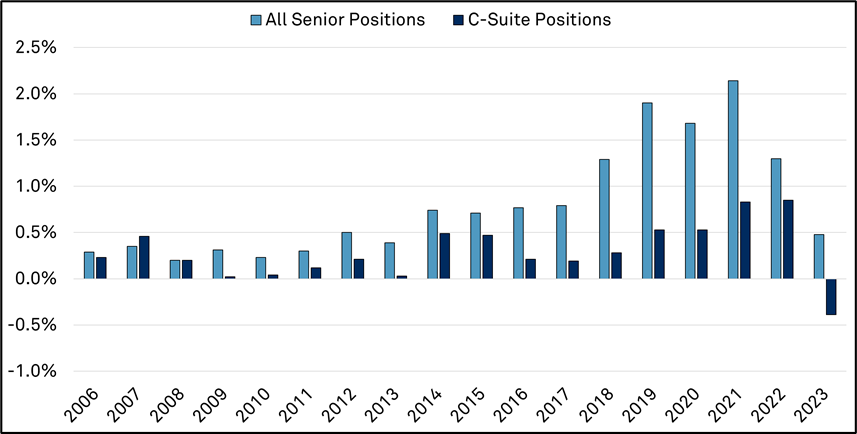S&P Global Offerings
Featured Topics
Featured Products
Events
S&P Global Offerings
Featured Topics
Featured Products
Events
S&P Global Offerings
Featured Topics
Featured Products
Events
Banking & Capital Markets
Economy & Finance
Energy Transition & Sustainability
Technology & Innovation
Podcasts & Newsletters
Banking & Capital Markets
Economy & Finance
Energy Transition & Sustainability
Technology & Innovation
Podcasts & Newsletters
S&P Global Offerings
Featured Topics
Featured Products
Events
Research — 8 Mar, 2024
By Henry Chiang, Samrudhi Kaulapure, and Daniel J. Sandberg
The growth in women’s representation among senior corporate positions, once a bright spot for gender parity, potentially faces an alarming turning point. Exponential growth over a decade is showing signs of losing momentum. Growth no longer appears exponential. A waning focus on diversity initiatives suggests a potential inflection point and calls our previous gender parity estimates into question.
Want to track parity statistics? View our source code(opens in a new tab) > (Sign Into the S&P Global Marketplace)
Figure 1: Year-on-Year Growth in Women’s Representation among Senior Leadership Positions in S&P Global Total Market Index Firms

Source: S&P Global Market Intelligence Quantamental Research. Data as Data as at 03/04/2024.
Key takeaways:
Explore the data used to conduct this research
S&P Global Professionals dataset
The dataset includes board and company affiliations, executive biographies, standardized job functions, titles, education, and compensation for more than 4.5 million professionals going back to 1992. Data are primarily sourced from Proxy Filings DEF-14A and amendments to 10-K filings, as well as other regulatory filings and press releases
This study includes more than 86,000 executives from 7,300 firms over 13 years. At each year, all index constituent firms as of December 31 with relevant executive information were included
READ THE FULL REPORT
